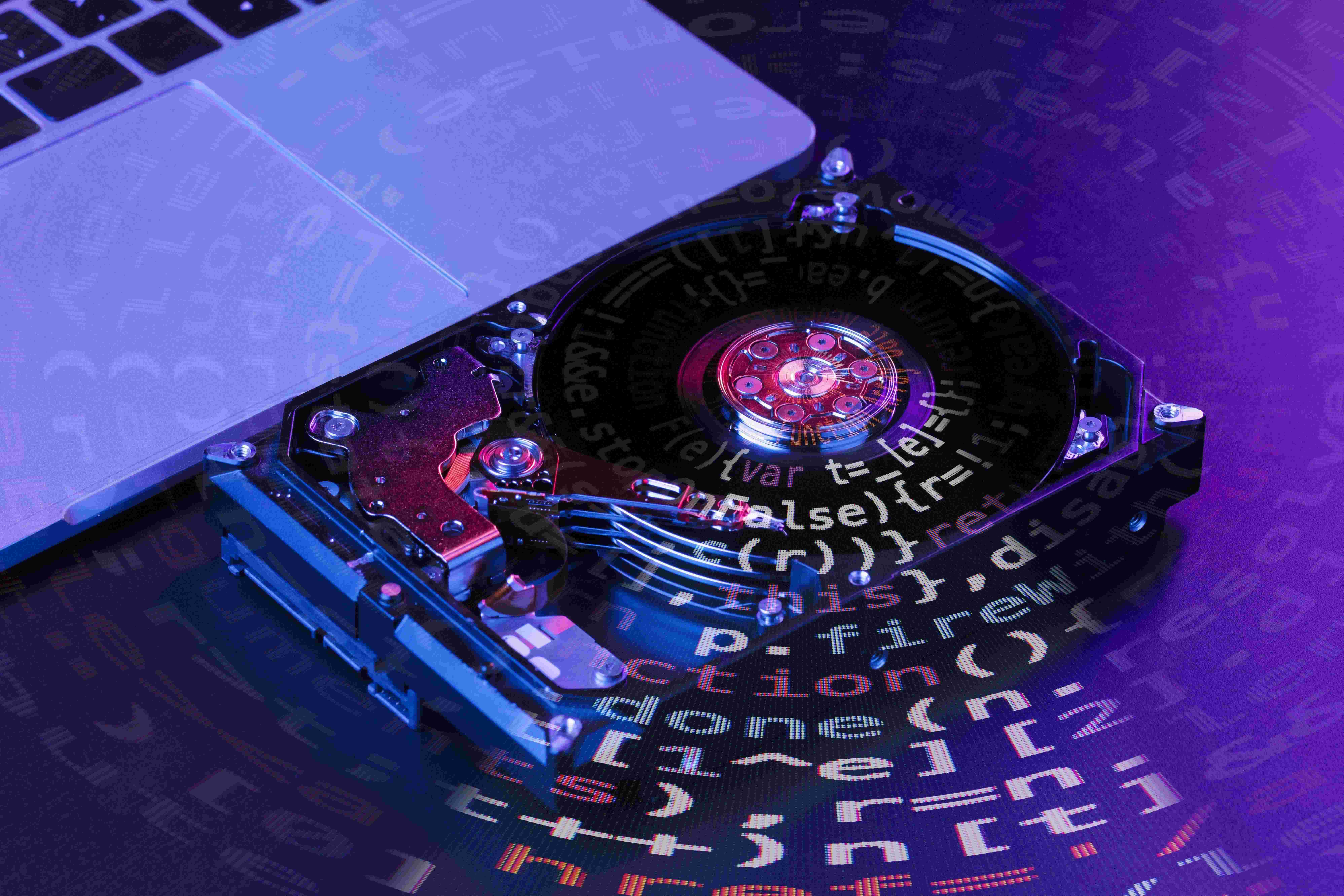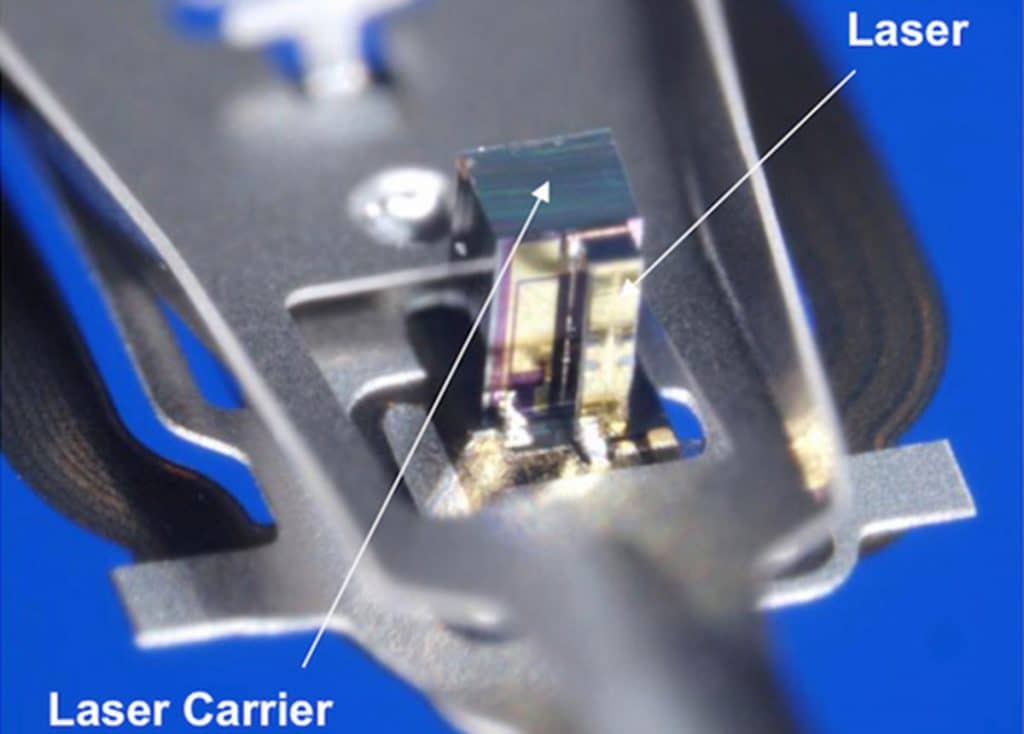HAMR: Is Seagate Betting Heavy on the Wrong Horse?
In 1965, Moore noticed that, interestingly, the number of transistors in a dense integrated circuit (and, consequently, data storage capacity) doubles annually; a decade later, in a much-quoted IEEE Text Speech, he corrected his observation and predicted that information density

By Iffy Kukkoo
13 Aug, 2017
Is Moore’s Law a Thing of the Past?
Who would have guessed, back when a 4GB or 8 GB HDD was a thing to brag about, that only two decades later, we would be able to buy same-capacity USB flash drives the size of a fingernail at the price of a McDonald’s meal?
Well, someone did – long before the 4 GB HDD; and that someone’s name is Gordon Moore, co-founder of Intel Corporation.
In 1965, Moore noticed that, interestingly, the number of transistors in a dense integrated circuit (and, consequently, data storage capacity) doubles annually; a decade later, in a much-quoted IEEE Text Speech, he corrected his observation and predicted that information density
Might approximate a doubling every two years, rather than every year, by the end of the decade. Even at this reduced slope, integrated structures containing several million components can be expected within ten years. These new devices will continue to reduce the cost of electronic functions and extend the utility of digital electronics more broadly throughout society.
Gordon Moore, co-founder of Intel Corporation
This is what came to be known as Moore’s law – the law of technological progress. Even though it is based on projections, it has been as good as a natural law for the past half century. Until recently, if you asked anyone in the tech industry, he would have probably told you that Moore’s law is as a sure thing as gravity. But, come 2015, and in an interview celebrating the fiftieth anniversary of its first formulation, Gordon Moore himself expressed doubts about its further applicability:
We won’t have the rate of progress that we’ve had over the last few decades. I think that’s inevitable with any technology; it eventually saturates out. I guess I see Moore’s law dying here in the next decade or so, but that’s not surprising.
Gordon Moore
We won’t have the rate of progress that we’ve had over the last few decades. I think that’s inevitable with any technology; it eventually saturates out. I guess I see Moore’s law dying here in the next decade or so, but that’s not surprising.
The ramifications of this are many. Among the more practical ones is probably if you should rethink your decision to get an HDD. With SSDs prices falling, and their capacity catching up to HDD, learning that HDDs manufacturers have little more room left for manoeuvring may sound damning for the future of the HDD industry (not to mention your decision to save some money and opt for an HDD instead of an SSD at such a moment!)
But – there’s always a “but”! The question is – is this one big enough? We’ll get to that a bit later.
How Do We Store Data on an HDD?
Everyone knows that a “bit” is the basic unit of information in computing, and that it can have only one of two values. Early on, it was the presence or the absence of a hole at a specific point of a punch card or the open or a closed electrical relay. But, then, in the 1950s, almost all storage devices turned magnetic (pun intended) and started using magnetic recording. Logically, in magnetic storage media, a bit is represented by the polarity of magnetization of a certain area in a magnetisable material.
An HDD consists of few fast-rotating non-magnetic disks (called platters) coated with a thin film of magnetized metal grains, and as many read-and-write heads placed over each platter and controlled by an actuator arm. The distance between the read-and-write head and its paired off platter (called flying height, or head gap) is few nanometres; the speed at which a platter rotates around the spindle can be anywhere between 4,200 rpm and 15,000 rpm.
Just for comparison, the first IBM drive, the giant 1956 350 RAMAC, consisted of a stack of 50 magnetic disks rotating at 1,200 rpm, with a head gap of 800 micro inches! Now, that’s progress! Speaking of – back to our HDD.
In an HDD, a group of adjacent grains (about 20-30) whose magnetization is aligned forms a magnetic region or a bit (a 1 or a 0). And we store all data as patterns of 0s and 1s. At this point, between you backing up your Documents folder to an external HDD, or simply transferring that image from last year’s trip to Barcelona to your D:\ drive stands nothing more but the full functionality of a read-and-write head: the write head produces a strong magnetic field and changes the direction of a magnetic region, and a read head detects this magnetisation. About 40 million written/read bits later – and there’s your image!
Now, wait a minute! I take and transfer images almost instantaneously. How fast does an HDD go? Well that fast.
And yes – it’s more than fascinating. A nice parallel by Kanawat Senanan at TedEd compares an HDD to a mini-model of a plane circling the earth once every 25 seconds, while flying 1 mm above the ground – and counting every blade of grass.
The Evolution of HDDs
We had to evolve from 4GB PCs to 4GB USBs in two decades simply because there was not enough space to store our ever-growing data. For example, if you go to Barcelona today and retake the exact same photograph you did in 1995, it would probably store 75 times more details/bits!
But there’s a limited writing area on a platter, you might wonder. How did we find a way to store more bits in the confines of the same space? (Or even less: after all, modern HDD do not have the 50 platters of the 350 RAMAC!)
There’s a long and a short answer to this, and both involve multiple innovations. Since there’s no need of delving into this further, we’ll choose neither, and we’ll go for an analogy.
Say, you’re living alone in a large house; you need nothing more but a single bed. But, after a while you get married, so you buy a bigger bed. Then you have three children and you reorganize the space so they can live with you as well. And when their friends come for a sleepover – you find a way to turn the cupboard in a two-storied bedThis is, more or less, how HDD storage capacity evolved. The space remained the same, but the density of stored information increased.
In the world of computing, the number of bits that can be stored in a given area (usually, in2) is called areal density. The higher the areal density is, the more information we can store. IBM 350 stored 5 million 6-bit characters at an areal density of 2,000 bit/in2; at the present moment, a square inch of a HDD may store 1 Tbit of information. That’s about half a billion times more.
LMR to PMR to SMR
But, as more people come to live within the same house, the less comfortable the place becomes. The same holds true for HDDs. More bits meant smaller grains and magnetic areas, and that also meant more precise read-and-write heads; at one point, it all became too miniature to be controlled.
Perpendicular Recording Diagram [Wikipedia]
At this point the grains were small enough to be exposed to the risk of superparamagnetic effect. Namely, it was noticed that at sizes such as this, the magnetization of the grains was easily disturbed and switched by heat energy.If a (+) becomes a (–), a 1 becomes a 0, and this leads to data loss.
Scientists solved the problem in a very elegant manner: they simply changed the direction of recording from longitudinal (LMR) to perpendicular (PMR). This enabled narrower data tracks and read/write heads. Suddenly, 100 Gb/in2wasn’t the limit; it was 1 Tb/in2. But it was a limit, still.
Ever trying to move the boundaries, four years ago, Seagate, the world leader in data storage solutions, introduced shingled magnetic recording, or SMR. Its name is descriptive and fully deserved. Namely, as opposed to PMR which uses parallel track layout, SMR allows the tracks on a platter to partially overlap, in a manner resembling roof shingles. This circumvents the physical limitations PMR confronted, resulting in a 25% HDD capacity increase, and raising the areal density bar to 1,25 Tb/in2.
to HAMR
Unlike any preceding recording technology, SMR came with a drawback. With SMR, due to the overlapping, writing one track requires rewriting the adjacent ones as well, since otherwise, data may be overwritten. Consequently, SMR slows down the writing process.
And this is where people – including Moore himself – started questioning Moore’s law. The superparamagnetic effect and the physical limitations seemed to have done enough to slow down the development of disk storage technologies; doubling on the current storage sizes biannually during the next decade seemed all but fantastical endeavour.
But, they didn’t know they were waiting for a HAMR to fall.
HAMR stands for heat-assisted magnetic recording, which is an update to PMR and SMR technologies. As the name itself reveals, the technology presupposes the use of heat to make magnetic recording more efficient; but, when did heat become part of the MR equation?
Well, HAMR is the best solution we’ve come up with to break the Magnetic Recording Trilemma. This fancy designation refers to many a headache among the engineers of the past decade. We already said that it is difficult to store data reliably for very small sizes. The problem is that the greater the areal density is, the less stable the magnetisation of the grains is. To make the magnetisation more permanent, the material used should be more coercive (meaning, more able to withstand an external magnetic field without becoming demagnetized). But, the more coercive the material, the more difficult to produce a magnetic field strong enough to flip the magnetic grains.
All in all, there’s a limit at which coercivity makes magnetic recording no longer feasible. Luckily, however, coercivity is inversely proportional to temperature, that is, the higher the temperature the less coercive the material becomes.
HAMR exploits this physical property of ferromagnetic materials, by adding a miniature laser (810nm wavelength and 20mW power) to the hard drive head which temporarily heats (to approximately 450°C) a very small magnetic area. Thus, the coercivity of the material is temporarily reduced, and data can be written with no trouble on the heated spot. And because only a small area is heated, it cools down as soon as the writing is complete, and it regains its coercivity almost instantaneously, which is necessary to stabilize the magnetization. SMR’s 1,25 TB/in2 suddenly doesn’t look that much. We’re talking about 4 TB/in2. Or, in more practical terms, 50+TB HDDs by the end of this decade.
Saturation, Moore? Please
And Beyond
People have been waiting for HAMR HDDs for a while now. But, few months ago, Seagate finally announced a timeframe:
From an R&D technology perspective, we continue to invest in our next-generation areal density HAMR technology. With products on the roadmap for the late 2018 calendar year, we believe we are leading the market in developing and bringing to market this important cost-benefit solution for mass storage capacity needs.
Stephen Luczo, CEO of Seagate
The first HAMR drives on the market should have a capacity of about 16 TB, but this should increase over time, not only through the advancements in the technology itself, but also by combining the HAMR with SMR technology, or by using some less dense materials such as helium to reduce resistance.
When we reach 50 TB, HAMR should make some way to BPMR (bit patterned magnetic recording) – recording a bit within a grain – but only until scientists figure out how to combine the two into HDMR (heated-dot magnetic recording: BPMR + HAMR), a technology which, should, theoretically, produce 100+ TB HDDs by the middle of the next decade.
Anything beyond HDMR is, basically, beyond MR.
Instead of a Conclusion
Now, SSDs have no mechanical components and, thus, perform all operations much faster than HDDs. If you want to put that into perspective, just think of your room and being able to reach everything instantaneously as opposed to having to walk around the room and look for each object every time you need one.
Consequently, SSDs are also few times more expensive than HDDs. Not only absolutely (which is obvious), but also relatively, in “price per gigabyte” terms, a neat comparison tool employed by tech industry leaders in the manner of, say, “pound-for-pound” ranking used by boxing experts to compare fighters across weight classes. The results? Well, while 1TB internal 2.5-inch hard drive costs about $50, an SSD of the same capacity and form costs at least four or five times more.
Add HAMR to the equation and, at first glance, it may certainly seem that HDDs should remain the dominant storage devices for a while.
But this is where we, here at Dee.ie, think a bit differently than the majority of the tech community.
First of all, we deem the “price per gigabyte” comparison tool both outdated and misleading – it worked well before multi-TB drives, but it’s time that it makes some space (see what we did there?) for “price per used gigabyte” calculations. Let’s put it this way: with an option of an external backup solution, and all these cloud storage and streaming services around – how much of a 50TB HAMR HDD will you actually use? Because if the answer is 10TB or less, it immediately begs the question: then why not buy a much faster and safer SSD?
Back to your house. It got crowded, all right, but, of course, it will feel a lot more comfortable if you bought another one, twice the size of the original one. In the future, if you need more space, you can buy an even larger house, five times the size of the first one. But, will you ever need one a thousand times bigger?
You get the point: there is a limit to which HDDs ought to grow; 100TB may be few steps beyond that.
Sure, HAMR seems like a good bet at the moment, and Seagate’s HAMR HDDs are meant primarily for enterprise users. But is that really enough to keep the tens of thousands Seagate employees at work?
Would I bet my house on an affirmative answer?
Hell no
 Posted By: Iffy KukkooResident Editor-In-Chief
Posted By: Iffy KukkooResident Editor-In-ChiefIffy is our exclusive resident technology newshound editor, relentlessly exploring the beauties of the world from a 4th dimensional viewpoint. When not crafting, editing or publishing our IT content, she spends most of her time helping people understand life and its basic principles. You know, the little things around you, that you've failed to grasp each day.
Dee.ie IT blog has updates on IT Consultancy, IT Contractors and Software Development related posts, on how your business can be managed effectively using technology.
Feel free to read more and or reach out to share your thoughts, feelings and input on our articles, our team would love to hear from you!
 Have a Question or Need an Answer? Ask our Live Chat and we will include it in our FAQ’s to make things easier for others
Have a Question or Need an Answer? Ask our Live Chat and we will include it in our FAQ’s to make things easier for others
We use cookies on this site to enhance your user experience.
For a complete overview of all cookies used, please see cookie settings.
Manage Cookie Preferences
More info, see the cookies and similar technologies section of the Privacy Statement
Required
We use required cookies to perform essential website functions. For example, they're used to log you in, save your language preferences, provide a shopping basket experience, improve performance, route traffic between web servers, detect the size of your screen, determine page load times, improve user experience and for audience measurement. These cookies are necessary for our websites to work.
Analytics
We allow third parties to use analytics cookies to understand how you use our websites so we can make them better and the third parties can develop and improve their products, which they may use on websites that are not owned or operated by AuditMyIT. For example, they're used to gather information about the pages you visit and how many clicks you need to accomplish a task.






